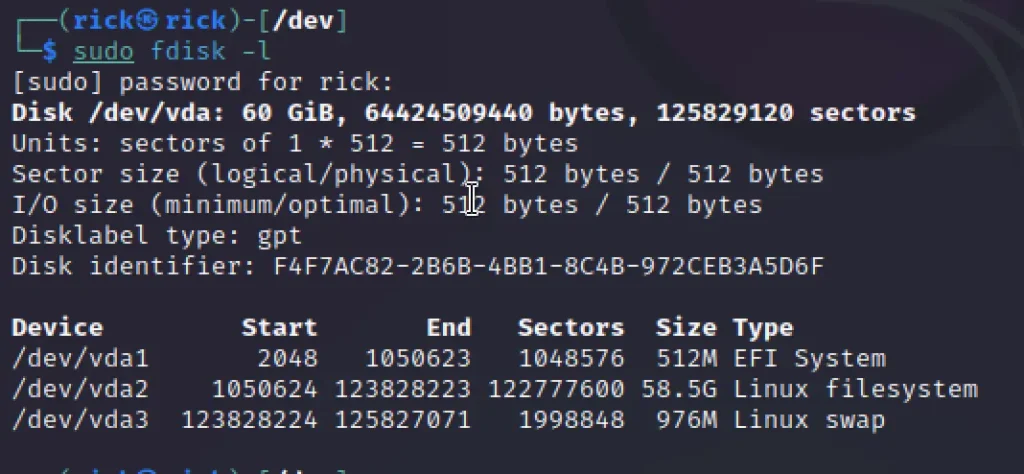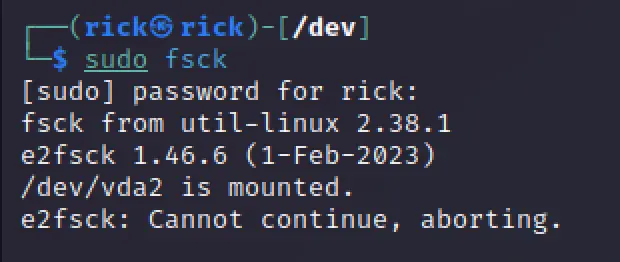Introduction
In this post, You will learn about file system and storage management command. Below is the video format of the post, Check it out ????????
Video ????
Let’s start ????
If you have any doubts you can watch the video above or you can ask questions in Discord I have given my Twitter profile link so you can ask there. ????????
https://odysee.com/@techyrick:d
https://twitter.com/HacklikeHacker
The /dev Directory
The /dev directory is a special directory in Unix-like operating systems, including Linux. It stands for “device” and contains device files that represent and provide access to various hardware devices and virtual devices in the system.
cd /dev ls -la

Viewing Partition
At times, you may want to view the partitions on your Linux system to see which ones you have and how much capacity is available in each. You can do this by using the fdisk utility. Using the -l switch with fdisk lists all the partitions of all the drives
fdisk -l

List Block Device
The Linux command lsblk, short for list block, lists some basic information about each block device listed in /dev.
lsblk

Mounting and Unmounting
Mounting and unmounting are the processes of attaching and detaching filesystems to a directory in Linux. This allows you to access the contents of the filesystem and work with its files and directories. Here’s an overview of how to mount and unmount filesystems in Linux
mount /dev/sda1 /mnt/mydrive umount /mnt/mydrive
Getting Information on Mounted disk
We can use the df command to get information like the metadata about the mounted disk.
df

Checking for errors in /mnt
fsck command helps to check errors in file system and helps to solve the error.
fsck

Conclusion
In this post, Guess you have learned about mounting and unmounting and see you in the next post ❤️




